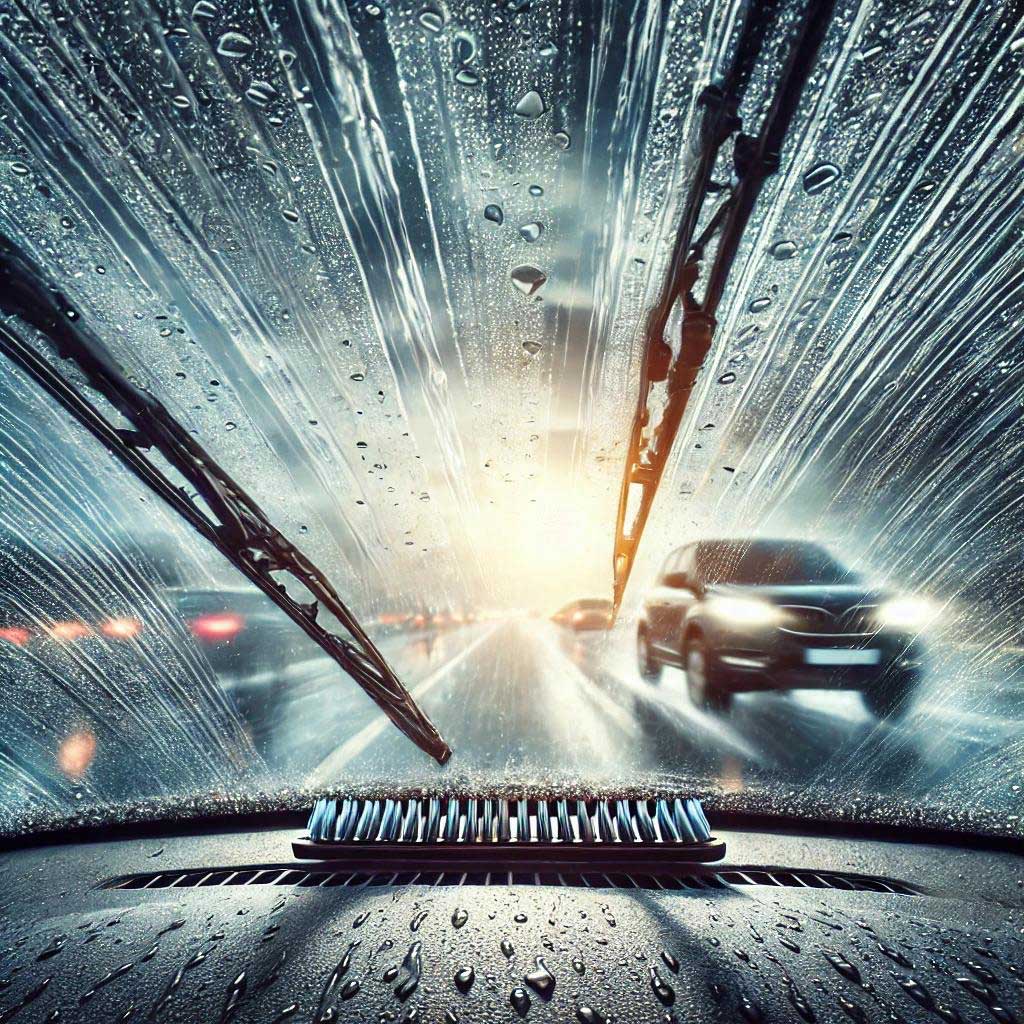Monday to Saturday - 9:00 am -18:00 pm

You might not think about them much—until it’s raining sideways or snow is slapping your windshield like it’s got a grudge. Yes, we’re talking about windshield wipers—those slender blades that keep your visibility clear and your drive safer. But how long do windshield wipers really last?
Just like tires, brake pads, and oil filters, windshield wipers don’t last forever. They wear out. They squeak. They smear. They make your windshield look like an abstract painting. So let’s fix that.
This post breaks down:
- How long windshield wipers typically last
- What affects their lifespan
- How to tell when they’re due for a replacement
- A quick cost guide
- Simple replacement and maintenance tips
- Frequently asked questions

How Long Do Windshield Wipers Typically Last?
Most windshield wipers last between 6 to 12 months, depending on use, weather conditions, and maintenance. If you’re in a dry, dusty area or somewhere with intense seasonal changes (looking at you, Northeast winters), you might find yourself replacing them closer to the 6-month mark.
| Climate | Average Wiper Lifespan |
|---|---|
| Mild Weather | 10–12 months |
| Extreme Heat or Cold | 6–9 months |
| Frequent Use or Heavy Rain Areas | 6–8 months |
If you haven’t replaced your wiper blades in over a year, it’s probably time.
Signs Your Windshield Wipers Need Replacing
Wipers are sneaky. They won’t scream “replace me!”—but they do drop hints. Here’s what to watch for:
1. Streaking and Smearing
If your windshield looks like a toddler finger-painted it every time it rains, your blades have likely worn edges.
2. Squeaking or Chattering Sounds
They’re supposed to glide, not sing. That annoying squeal is your signal to replace them.
3. Skipping or Uneven Contact
If the blade jumps or skips areas of your windshield, it’s likely not sitting flat anymore due to warping or wear.
4. Split or Cracked Rubber
Take a peek at the rubber strip. If it’s cracked, split, or looks like it went through a paper shredder—yep, time for a replacement.
5. Reduced Visibility During Rain or Snow
This one’s obvious. If you’re squinting through water swirls while the blades are “working,” they’re not really working.
What Affects Windshield Wiper Lifespan?
Several sneaky factors can shorten your wiper’s life faster than you think.
UV Exposure
Sunlight breaks down the rubber, especially if you park outside all day.
Temperature Extremes
Hot summers dry them out. Freezing winters can make them brittle.
Dirt & Debris
Dust, sand, and road grime act like sandpaper on the rubber, speeding up wear.
Use Without Fluid
Using wipers on a dry windshield can wear the blades fast. Always spray washer fluid first.
Wiper Blade Types and How They Compare
Not all wiper blades are created equal. When replacing your windshield wipers, you’ll come across different types—each with its own pros and cons.
| Wiper Blade Type | Pros | Cons |
|---|---|---|
| Traditional (Frame-Style) | Affordable, widely available | More prone to ice buildup |
| Beam Blades | Sleek design, better pressure distribution, great in snow | Slightly more expensive |
| Hybrid Blades | Combines frame and beam features, improved durability | Pricier than standard blades |
If you live in an area with lots of snow or rain, beam or hybrid blades are worth the investment. For everyday driving in mild climates, traditional blades will do just fine.
How Much Do Windshield Wipers Cost?
Wiper blades are one of the more affordable maintenance items on your car. Here’s a breakdown of the typical cost:
| Blade Type | Price Range (Per Blade) |
|---|---|
| Traditional | $10 – $20 |
| Beam | $15 – $30 |
| Hybrid | $20 – $35 |
Some high-end or specialty vehicles may require specific blades that cost more, but for most drivers, replacing both blades can cost $20 to $60 total.
Tip: Don’t forget the rear wiper blade if you have a hatchback or SUV. That one often gets ignored.
Can You Replace Windshield Wipers Yourself?
Absolutely! Replacing wiper blades is one of the easiest DIY tasks you can do. If you can snap LEGO bricks together, you can change wiper blades.
Here’s a quick step-by-step:
- Check your owner’s manual to find the correct wiper sizes.
- Lift the wiper arm off the windshield.
- Press the release tab and slide the old blade off.
- Align and click the new blade into place.
- Gently lower the arm back onto the glass.
Takes less than five minutes per blade—and zero mechanic fees.
Wiper Maintenance Tips for Longer Life
Want to stretch your blades’ lifespan a little longer? Try these simple tricks:
- Clean your blades weekly with a damp cloth to remove dirt and grime.
- Use washer fluid regularly to avoid dry wiping.
- Lift your blades during winter to prevent them from freezing to the windshield.
- Park in the shade to reduce sun damage.
Frequently Asked Questions
How often should I replace my windshield wipers?
Most experts recommend replacing wipers every 6 to 12 months. If you notice streaking, squeaking, or skipping, replace them sooner.
Can old wipers damage my windshield?
Yes. Worn rubber can expose the metal or plastic beneath, potentially scratching your glass.
Do expensive wiper blades last longer?
Often, yes. Beam and hybrid blades generally last longer and perform better in harsh weather compared to cheaper traditional blades.
What size wiper blades do I need?
Check your vehicle owner’s manual or look it up online using your car’s make, model, and year. Sizes may vary between the driver’s side, passenger’s side, and rear wiper.
Are silicone wiper blades better than rubber?
Silicone blades typically last longer and perform better in extreme conditions, but they also tend to cost more. If you live in a place with heavy rain or snow, they’re a solid investment.
Final Thoughts
Windshield wipers may seem small, but they play a huge role in keeping you safe on the road. Whether you’re caught in a summer downpour or winter snowstorm, clear visibility is a must.
So, if your wipers are squeaky, streaky, or skipping—don’t wait. Replace them. It’s a quick fix that makes a big difference.
And now that you know how long windshield wipers last, how to spot the signs of wear, and what to do about it, you’re already one step ahead of the weather.